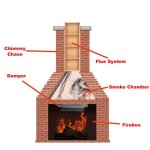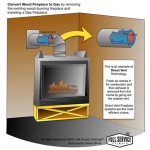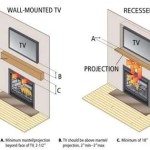Rustic Outdoor Fireplaces: A Comprehensive Guide
An outdoor fireplace can transform a backyard into a cozy and inviting living space. Among the various styles available, rustic outdoor fireplaces offer a unique charm, blending seamlessly with natural surroundings and evoking a sense of warmth and relaxation. This article will delve into the key aspects of rustic outdoor fireplaces, covering their design elements, construction materials, installation considerations, and maintenance practices.
The term "rustic" encompasses a wide range of design aesthetics, often characterized by natural, unrefined materials and a focus on simplicity and functionality. In the context of outdoor fireplaces, a rustic design typically incorporates elements like natural stone, reclaimed wood, and rough-hewn textures. The overall effect is to create a fireplace that looks like it belongs in its environment, rather than appearing as an artificial addition.
Design Elements of Rustic Outdoor Fireplaces
The design of a rustic outdoor fireplace is crucial to achieving the desired aesthetic. The choice of materials, the overall shape, and the finishing touches all contribute to the fireplace's character.
Natural Stone: One of the most common materials used in rustic fireplace construction is natural stone. Options include fieldstone, river rock, flagstone, and stacked stone. Each type offers a distinct appearance and texture. Fieldstone, for example, provides a rugged and irregular look, while river rock offers a smoother, more rounded surface. The choice of stone will depend on the desired level of formality and the existing landscape. The layout of the stone can also change the overall design. A linear, horizontally stacked stone pattern can appear more modern and clean, while a more random and non-uniform pattern speaks directly to the rustic aesthetic.
Reclaimed Wood: Reclaimed wood can be used for mantels, shelves, or as decorative accents on a rustic fireplace. This material adds a touch of history and character to the design, as it often bears the marks of its previous life. The use of reclaimed wood aligns with the rustic aesthetic's emphasis on repurposing and reusing materials. It adds unique details and visual interest to the fireplace structure. The weathering and color variations already present in reclaimed wood only enhance its rustic appeal.
Rough-Hewn Textures: Rough-hewn textures are essential to creating a rustic look. This can be achieved through the use of unfinished stone, exposed brick, or textured stucco. The goal is to create a surface that is visually interesting and tactile. Avoid smooth, polished surfaces, as these tend to look more modern and refined. Instead, embrace the imperfections and irregularities that are characteristic of rustic materials. These imperfections are what give rustic designs their inherent charm and authenticity.
Shape and Form: The shape of a rustic outdoor fireplace can range from simple and rectangular to more complex and organic. A traditional rectangular shape is often the easiest to construct, but a more organic shape can better blend with the natural surroundings. Consider incorporating curves and irregular lines into the design to create a more natural look. The height and width of the fireplace should also be proportionate to the size of the outdoor space. A large, imposing fireplace can overwhelm a small backyard, while a small fireplace may get lost in a larger setting.
The Hearth: The hearth of the fireplace, the area directly in front of the firebox, can be constructed from various materials, including stone, brick, or concrete. Opting for a material that complements the overall design is of importance. A wider hearth can provide extra seating space and creates a more inviting atmosphere. Consider adding a border of stone or brick around the hearth to define the space and add visual interest.
Construction Materials and Techniques
The choice of materials and construction techniques is critical to the durability and longevity of a rustic outdoor fireplace. It is important to select materials that are weather-resistant and able to withstand the high temperatures of a fire.
Stone Masonry: Stone masonry is the most common construction method for rustic outdoor fireplaces. This involves carefully laying stones in a mortar bed to create a solid and stable structure. It is important to use a high-quality mortar that is specifically designed for outdoor use. Proper drainage is also essential to prevent water damage to the stone and mortar. The selection of stones should be chosen according to factors like climate, environment, and the overall aesthetic of the structure. If the area gets a lot of moisture, choosing more water absorbent stone could lead to premature cracking and damage.
Concrete Blocks: Concrete blocks can be used as a foundation for a stone veneer fireplace. This method is often more cost-effective than building a solid stone fireplace, as it requires less stone and labor. The concrete blocks provide a stable base for the stone veneer, which is then attached using mortar. It is important to ensure that the concrete blocks are properly reinforced and that the stone veneer is securely attached. The veneer should also be properly sealed to prevent water damage.
Firebrick: The firebox of the fireplace, where the fire actually burns, should be lined with firebrick. Firebrick is a type of refractory brick that is designed to withstand extremely high temperatures. It is essential to use firebrick in the firebox to protect the surrounding structure from heat damage. The firebrick should be laid in a fireclay mortar, which is specifically designed for use with firebrick. The layout and design of the firebox is also important for efficiency and safety. An improperly constructed firebox can lead to poor draft and dangerous smoke buildup.
Mortar and Jointing: Correct mortar is crucial for bonding the stone together. The choice of mortar depends on the type of stone used and the desired look. A rough, textured mortar joint can enhance the rustic aesthetic, while a smooth, recessed joint can create a more refined appearance. The mortar joints should be properly sealed to prevent water penetration. Consider adding a color pigment to the mortar to match the color of the stone. This can create a more cohesive and unified look.
Metal Components: Metal components, such as fire grates and dampers, should be made from durable, rust-resistant materials like stainless steel or cast iron. These components will be exposed to high temperatures and harsh weather conditions, so it is important to choose materials that will withstand the elements. The fire grate should be sized appropriately for the firebox, and the damper should be easy to operate and adjust.
Installation Considerations and Safety
Installing a rustic outdoor fireplace requires careful planning and attention to safety. It is important to consider local building codes and regulations, as well as the specific site conditions.
Building Codes and Permits: Before starting any construction project, it is essential to check with the local building department to determine the specific codes and regulations that apply. Most jurisdictions require a building permit for outdoor fireplaces. The building codes will specify requirements for the firebox size, chimney height, clearances from combustible materials, and other safety features. Failing to obtain the necessary permits can result in fines and delays. Additionally, adhering to building codes ensures the fireplace is safe and compliant with standards.
Site Preparation: The site for the fireplace should be level and stable. If the ground is uneven, it may be necessary to excavate and fill to create a level surface. The foundation of the fireplace should be built on solid ground or a concrete slab. The foundation should be deep enough to prevent frost heave, which can damage the fireplace over time. Proper drainage is also important to prevent water from accumulating around the foundation.
Clearance from Combustible Materials: It is essential to maintain adequate clearance between the fireplace and any combustible materials, such as wood fences, trees, and overhanging structures. Building codes typically specify minimum clearance distances for different types of fireplaces. The chimney should also be high enough to vent smoke away from nearby buildings and trees. Failure to maintain adequate clearance can create a fire hazard.
Chimney Design: The chimney is one of the most important components of an outdoor fireplace, and its design is essential for proper draft and smoke ventilation. The chimney should be tall enough to create a natural draft, which draws smoke up and out of the firebox. The chimney should also be lined with fireclay tiles to protect the surrounding structure from heat damage. The chimney cap should be properly sized to prevent rain and debris from entering the chimney. The chimney should be regularly inspected and cleaned to prevent creosote buildup, which can create a fire hazard.
Safety Features: Consider adding safety features to the fireplace, such as a spark arrestor to prevent embers from escaping the chimney and a fire screen to protect against sparks and flames. These safety features can help to prevent accidental fires and injuries. Additionally, ensure that a fire extinguisher or other fire suppression device is readily available nearby.
Professional Installation: Because of the complexity of building codes and the precision needed for safety, it is a good idea to consult a professional installer with experience in outdoor fireplace construction. Even if the project is mostly a DIY job, consulting with a professional can help to prevent structural problems or safety hazards in the long run.
By carefully considering these design elements, construction materials, and installation considerations, it is possible to create a beautiful and functional rustic outdoor fireplace that will provide years of enjoyment.

Outdoor Fireplace Designs Stone Rustic Fireplaces

Outdoor Fireplaces Fire Pits Surrounds Landscape Architecture

Amazing Fire Pit Outdoor Fireplace Ideas Natural Brick Stone Depot

Awesome 20 Fabulous Rustic Outdoor Fireplace Designs Https Gardenmagz Com 30 Rus Fireplaces Remodel Stone

Rustic Outdoor Fireplace Country Garden Baltimore By Poole S Stone And Inc Houzz Ie

Garden Guru Outdoor Fireplaces Extend Season Outside

Outdoor Fireplace South Shore Backyard Living

30 Outdoor Fireplace Ideas Cozy Fireplaces

9 Outdoor Fireplace Ideas Town Country Living

Outdoor Fireplace Inspiration Cami Weinstein
Related Posts








